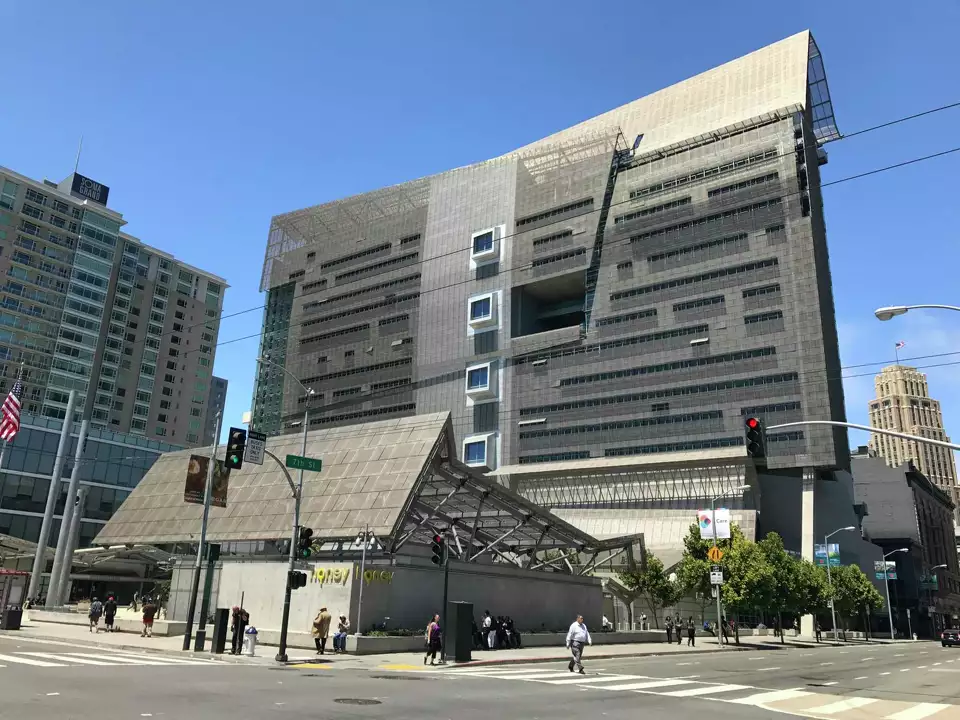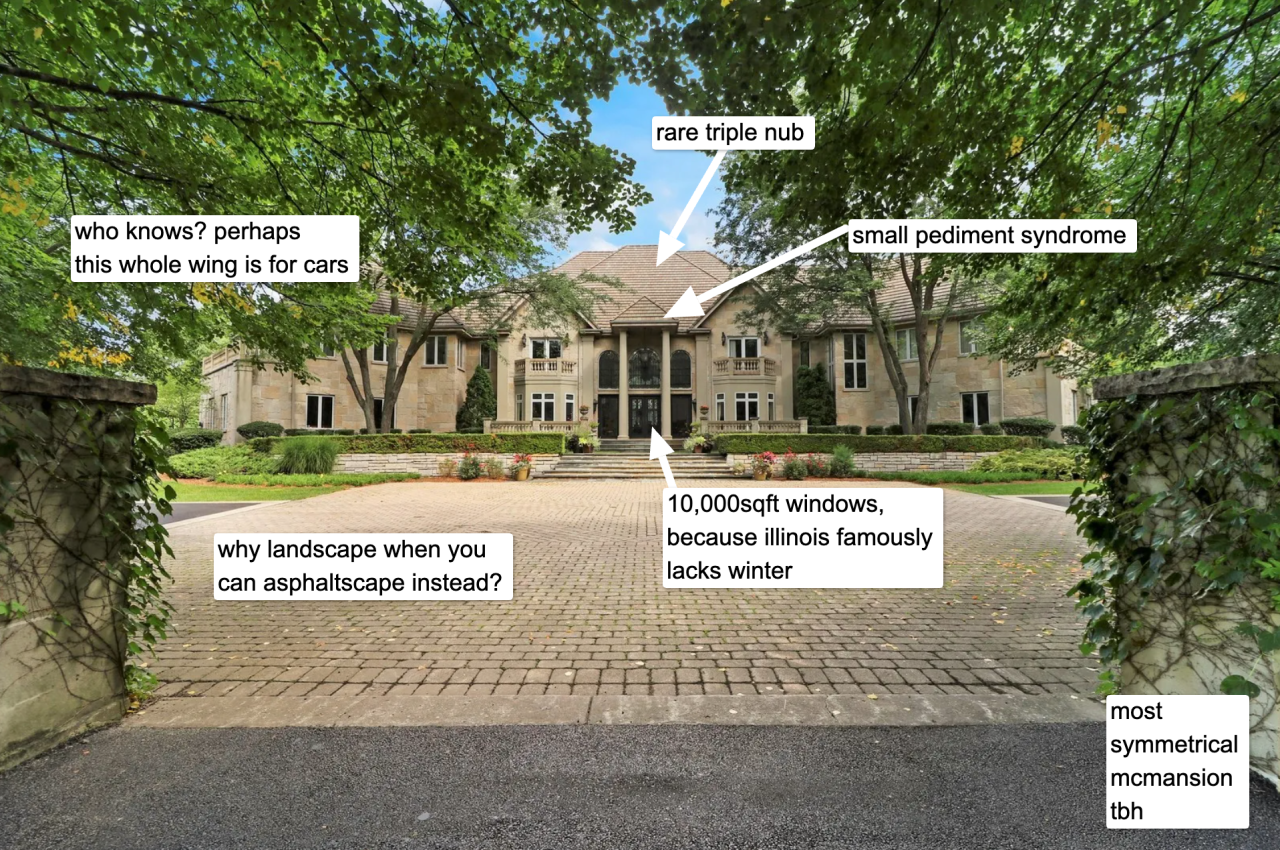After seeing the destruction of Christianity and Whites themselves, this has to be the most obvious sign of complete decay and gross offense against God outside of bastardizing land for mindless materialist development. The only difference between 21st century Weimar and 20th century Weimar is that this is a much more oppressive form of warfare that shadows over any good soul's ponderings when in the presence of such ugliness.. I used to write about this a lot, here are some walls of text for you all to read when you have time to kill.
Virtually all modern architecture has been reduced to a graveyard of soulless structures devoid of beauty, symbolism, and the divine spirit that once defined American and European cities. Brutalism, deconstructivism, and neo-modern glass buildings stand as bleak monuments to the materialistic, nihilistic, and parasitic ideologies that have taken root in our societies. These designs reflect the emptiness and spiritual bankruptcy of the new elite, a ruling class that has severed its ties from the higher ideals of beauty, truth, and God, instead celebrating their hollow dominion with structures that insult the human soul.
In the major cities, from Chicago to New York to the capitals of Europe, the skyline has become a mirror of spiritual decay. The elegant, harmonious forms of the Greco-Roman pantheons, Gothic cathedrals, and their natural evolution in neo-classical architecture have been supplanted by a dystopian vision of sheer glass, cement blocks, and jagged, angular lines. The organic flow of arches, columns, and intricate stone carvings that once pointed towards the heavens signifying the ascent of the human spirit towards the divine have been replaced by dead boxes, indifferent to our gaze, indifferent to God.
Brutalism stands as the most apt metaphor for this degradation, hulking, gray concrete masses that deny all warmth and life, designed to oppress the spirit rather than uplift it. The style originating in the post-World War II era grew from a nihilistic rejection of traditional aesthetics, appearing inhumane and crushing, like a concrete tomb for the soul. The Boston City Hall for example, a glaring example of Brutalism, looks more like a fortress of an occupying force than a civic building meant to serve the people. Its harsh lines and oppressive facade do not inspire awe or reverence; they provoke unease, symbolizing a disconnect from the divine order.

The contemporary glass-and-steel skyscrapers that dominate our cities today are similarly devoid of meaning. They are monuments not to human achievement, but to the worship of Mammon, symbolizing greed, power, and the hollow pursuit of material wealth. Take, for example, the Vessel in New York City’s Hudson Yards, staircase to nowhere, an elaborate but empty shell that epitomizes the meaninglessness of modern aesthetics. It serves no purpose other than to reflect the vanity and self-absorption of its creators, an endless spiral that leads the viewer nowhere, much like the spiritual state of the age. No wonder people have jumped off of it.
Gone are the domes and spires of the past, which pointed upward, directing the soul towards God. Instead, we have faceless glass towers like One World Trade Center, cold, uninviting, and spiritually vacuous. The old World Trade Center, despite its modern design, at least represented strength and unity. Its replacement is a sleek, polished dagger, symbolizing not hope or resilience, but the consolidation of power by an unseen elite. The reflective glass, ever-changing with the sky, suggests an illusion, a mirage. Fitting for an era built on lies and deception.

This architectural shift is not merely aesthetic but the visual manifestation of a deeper spiritual battle. Traditional architecture of the Romanesque, Gothic, and neoclassical styles embodied a sacred geometry, a harmonious proportion rooted in divine order. These forms, born from the ancient traditions of the Greco-Roman and Christian world, were designed to evoke the sublime to remind us of our place in the cosmos as creatures made in the image of God. The Parthenon in Athens, the soaring spires of Notre Dame, and even the grandeur of the United States Capitol building despite its current infestation all communicate a reverence for higher ideals a striving towards the divine.
Contrast this with the jarring angles and asymmetry of deconstructivist architecture, which rejects harmony and deliberately subverts traditional forms. The works of architects like Frank Gehry, most notably his Walt Disney Concert Hall in Los Angeles appear chaotic, disjointed, and unstable, perpetuating the postmodern embrace of fragmentation and decay. This is spiritual warfare made manifest: the beauty and order of God's creation twisted into disarray, a deliberate affront to the divine.

It is no coincidence that the rise of modern architectural abominations followed the end of World War II, when the great old cities of Europe lay in ruins. The firebombing of Dresden, the destruction of Hamburg, the shelling of of Berlin obliterated centuries of architectural heritage. The subsequent "reconstruction" was nothing less than a cultural coup, replacing the elegant facades of the past with sterile, industrial designs that have no connection to history or place. Warsaw was once a city of Baroque beauty, but was rebuilt with blocky Soviet-style architecture, stripping the Polish people of their cultural soul.
In America this process has been equally insidious. Chicago’s Federal Center epitomizes the new ideology: a lifeless grid of black steel, devoid of ornamentation or grace. It stands in direct contrast to older structures like the Chicago Cultural Center, with its Beaux-Arts design and magnificent stained-glass domes. One embodies the divine spark of creation; the other, the nihilistic void of modernity.


We are living in a landscape of spiritual desolation where the ugliness of modern architecture reflects the emptiness of the human collective soul. The ancient architects understood that the built environment shapes the human spirit. They knew that we are beings who long for beauty, for harmony, for a connection to something greater than ourselves. The soaring arches of Gothic cathedrals and the harmonious symmetry of neoclassical buildings are not mere relics of the past but blueprints for a society in tune with the divine.
This desecration was no accident; it was a premeditated act of war by the inverted architects of our age, who are reptilian in their cold-blooded designs and roach-like in their scuttling away from light and truth. These twisted souls who despise God and the splendor of His creation seek to poison the landscape with their abominable structures; monuments to their own hollow vanity and nihilistic creed. They revel in the spiritual decay they have wrought building temples not to the divine but to their own grotesque mockery of it. Like parasites they infest our cities feeding off the life force of beauty and leaving behind nothing but soulless husks, a testament to their hatred of what is pure, holy, and eternal.
Which is why it is important to seek to rebuild the beauty of what once was. I'm sur it has been talked about here but this is a jarring example.
The 1893 World's Fair in Chicago (the Columbian Exposition) was a fleeting glimpse of what humanity could achieve when it turned its soul toward beauty, truth, and the divine. It was an ephemeral city born of marble and white plaster yet it cast a light so bright that it continues to shine over a century later, a beacon for those who long for a return to a time when we still built with reverence not hubris. Here one finds the architecture of a society in touch with its Creator, harmoniously reflecting His glory through every column, dome, and arch.
They called it the White City, resplendent with glowing alabaster, the buildings arranged like a celestial symphony along the banks of the reflecting lagoon. The structures were not just displays of engineering prowess but love letters to the divine order executed in the classical styles of the Greeks and Romans married with the exuberance of the Renaissance and the elegance of the neoclassical revival. Here was a celebration of the Creator’s own blueprint where every line, curve, and cornice sang in praise of the eternal harmony that governs the universe.
The Peristyle with its colonnaded arms stretched wide like an embrace, stood as a testament to our ancestral understanding that architecture should cradle the human spirit, not crush it. It was a gateway to the divine, its columns standing as sentinels of an ancient, sacred knowledge we have since abandoned. The Court of Honor centered around the Grand Basin shimmered in the sunlight reflecting the brilliance of its design and the light of a society still aligned with something higher than itself. This was a place where one could walk and feel the breath of the divine, where the interplay of light and shadow invoked a quiet reverence, a reminder of the transitory nature of human life and the eternal nature of beauty.

The Administration Building with its soaring dome was a temple in all but name. Its gilded cupola was a symbol of mankind's striving towards the heavens. Here was a place that embodied the sacred geometry of the cosmos, a perfect circle set above a square foundation, the eternal meeting the temporal in a form as old as the Pythagorean mysteries. The architects were visionaries (Daniel Burnham, Charles McKim, and Richard Morris Hunt) who understood that a building was more than mere shelter. It was a vessel for the soul, a place where the sacred and the mundane could intersect, and they filled their designs with the reverence and love for the divine that modern architects and their enforcers have all but forgotten today.
Consider the Agricultural Building with its grand arches and intricate sculptures celebrating the bounty of the earth, one of God’s gifts to mankind. It was a structure that spoke not only of industry and progress but of gratitude a silent hymn to the cycles of life, the providence of God that sustains us all. The Palace of Fine Arts, a shimmering jewel along the water’s edge, housed treasures of human creativity, the fruits of the divine spark that resides within each of us. It was a temple of beauty, a sanctuary where art could meet architecture both elevating the other in a mutual obeisance to God’s own artistry.

The White City was built as an ephemeral vision yet it left an indelible mark on the American spirit. It showed people what could be when they align their hearts and hands with the divine. The tragedy is that they did not heed its lessons. Instead they abandoned this path and turned towards the sterile emptiness of modern design, erecting lifeless towers that mirror only their own hubris and alienation. The White City was razed and its buildings torn down or left to decay much like our own connection to the higher ideals it represented.
The architecture of the future will have to become divine again. The architecture of the Columbian Exposition is not merely a relic of the past; it is a blueprint for tomorrow. It shows us how to build for a society that is spiritually intact, a society that does not merely exist but thrives in harmony and obeisance with God’s will. Instead of nostalgia there should be reverence and understanding of these designs. The future we long for is not one of cold glass and steel but of stone and light, of buildings that breathe with the life of the human spirit and reflect the glory of God.
The only way to return closer to God in this regard is through the columns, domes, and arches that point heavenward, where every detail is a prayer and every design is an act of creation. This is what architecture can and should be, not a testament to man's power, but a humble offering to the One who gives us life. An earthly reflection of the beauty of the heavens.
The White City was fleeting but its spirit endures. It whispers to me still, urging to be remembered and to let our souls know what we are capable of when we build not for the material but for the divine. I do believe that man will build such marvels again when the husks of the jewish revolutionary spirit and their pawns have fallen.






























